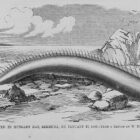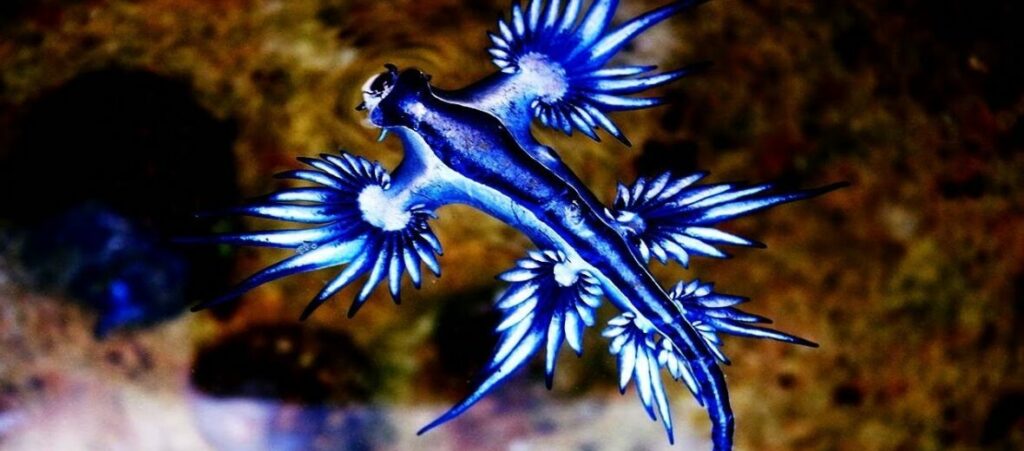Ganda, the rhinoceros who crossed the known world in 1500
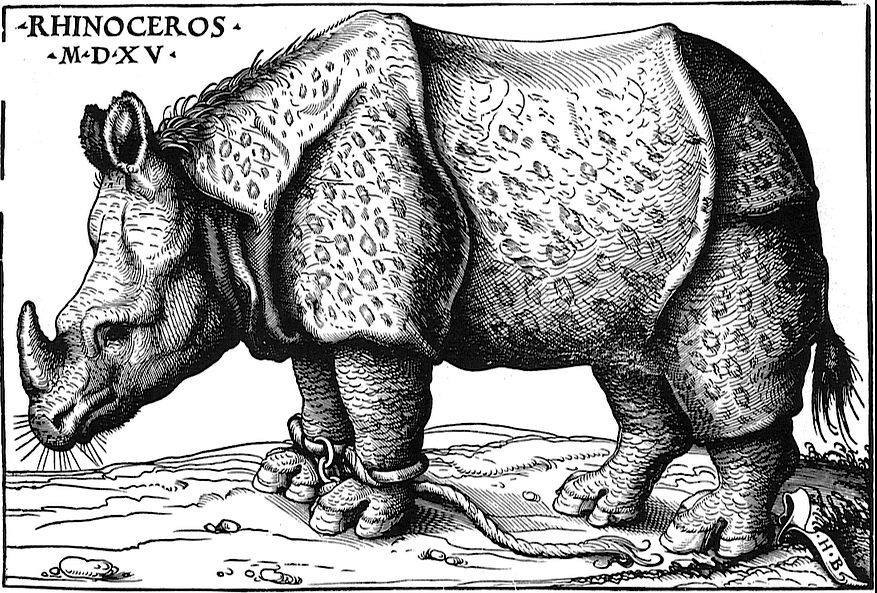
On May 20, 1515, the Portuguese ship named Nossa Senhora da Ajuda docked in Lisbon with a cargo of spices and rarities from India, and an animal that gained fame all across Europe: the rhinoceros Ganda.
Under the command of Francisco Pereira Coutinho, the vessel had journeyed from Goa, crossing the Indian Ocean, rounding the Cape of Good Hope, and traversing the Atlantic. Its purpose extended beyond transporting valuable raw materials for resale in European markets; it carried a precious gift befitting a sovereign.
A Rhinoceros Goes to Europe
The year prior to Nossa Senhora da Ajuda’s departure, the Portuguese governor of India, Afonso de Albuquerque, had sent ambassadors to Sultan Muzaffar Shah II in an attempt to secure permission to build a fort on Diu Island.
While the mission did not achieve its intended success, the two parties exchanged numerous diplomatic gifts, among which was an enormous Indian rhinoceros named Ganda.
Sending rare animals as a friendly gesture was not uncommon in the East or Europe. Exotic birds, colorful insects, and fierce predators were frequently exchanged during diplomatic operations. However, a living rhinoceros accustomed to captivity was a gift with few parallels in European history.
Presumably for this reason, the governor decided to send Ganda to Portugal as a gift for King Manuel I. The last known rhinoceros brought to Europe dated back to ancient Rome, often confused with mythical beasts like the unicorn in medieval bestiaries.
After 120 days of travel, Nossa Senhora da Ajuda, departing from the port of Goa in January 1515, arrived in Lisbon and unloaded its precious cargo. The rhinoceros was carefully examined by scholars and curious onlookers, described in numerous private letters dating back to the 1500s.
Fame and Glory
The entire Europe was abuzz with the arrival of the living Indian rhinoceros in Portugal. The Florentine Giovanni Giacomo Penni drew Ganda and published it in Rome on July 13, 1515, approximately two months after the rhinoceros landed in Lisbon.
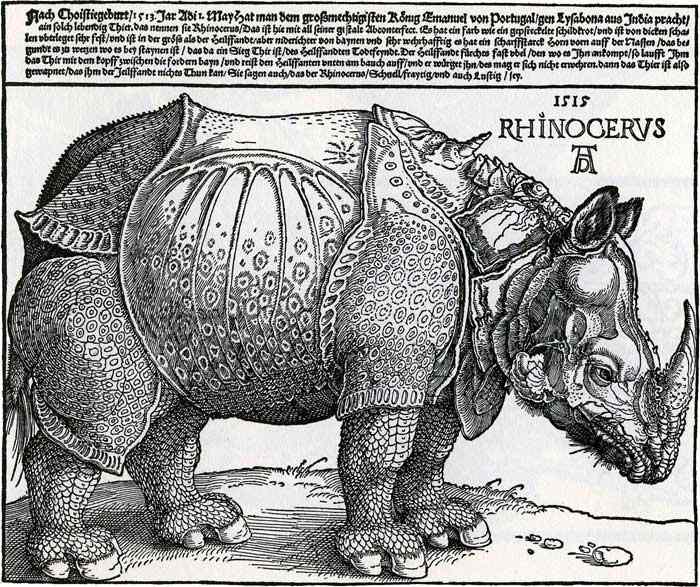
The most prominent evidence of Ganda’s arrival in Portugal is likely the “Dürer’s Rhinoceros“, a woodcut from 1515 by the German artist Albrecht Dürer. Dürer did not depict Ganda anatomically accurately because he never personally observed the animal. Instead, he based his engraving on a detailed description of Ganda’s anatomical features received from a Moravian typographer, Valentim Fernandes, who observed the rhinoceros shortly after its arrival in Europe.
Above the rhinoceros depiction, Dürer inscribed a statement citing (with the wrong date) Ganda’s arrival in Lisbon:
“On May 1, 1513 AD (sic), the mighty king of Portugal, Manuel of Lisbon, brought this living being called a rhinoceros from India. This constitutes an accurate representation. It has the color of spotted tortoise and is almost entirely covered with very thick scales. It is the size of an elephant but has shorter legs and is almost invulnerable. It has a strong pointed horn on the top of its nose that it sharpens on stones. It is the bitter enemy of the elephant. The elephant is afraid of the rhinoceros, so when the two meet, the rhinoceros charges with its head between the front legs to tear the belly of the elephant, which cannot defend itself. The rhinoceros is so well-armored that the elephant cannot harm it. It is said that the rhinoceros is fast, impetuous, and cunning.”
After arriving in Portugal, Ganda was transported to one of King Manuel I’s menageries, separated from the enclosure where the monarch liked to confine rare beasts arriving in his domains from every corner of the known world.
Manuel I was not just a collector of exotic animals but also a enthusiast of Roman and medieval bestiaries. The first idea he conceived was to test Pliny the Elder’s account of the fierce rivalry between elephants and rhinoceroses.
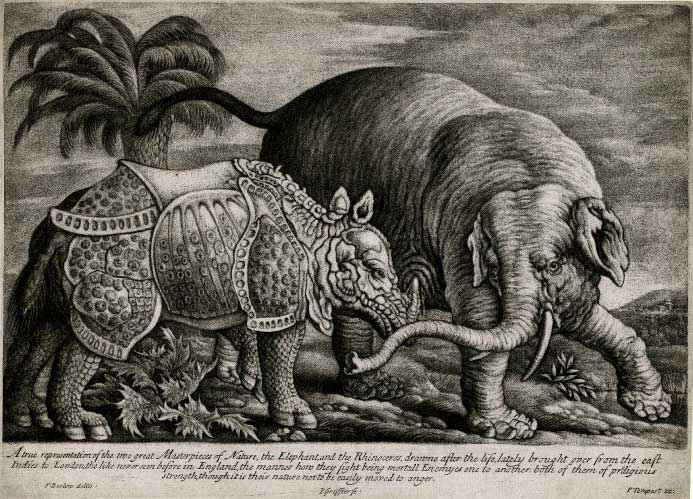
The “Encounter”
The fierce (entirely imaginary) battle between a rhinoceros and an elephant painted by Francis Barlow and published in the London Gazette in 1685
In his Naturalis Historia, Pliny the Elder contributed to spreading the myth for centuries that elephants and rhinoceroses were sworn enemies and these two African giants would engage in ferocious battles to the death. Manuel I had an elephant, a rhinoceros, and plenty of free time to put Pliny’s words to the test.
On June 3, 1515, just two weeks after Ganda’s arrival in Lisbon, a crowd of onlookers gathered to witness the clash of titans. Ganda began advancing slowly but confidently towards its opponent; the elephant, unaccustomed to the noise of the crowd, panicked and sought refuge in its cage before the rhinoceros could approach, forcing the suspension of the spectacle.
Perhaps disappointed by the lack of confrontation between the two giants, Manuel I decided to gift Ganda to Pope Leo X to maintain good relations with the papacy and facilitate the authorization for exclusive possession of all new lands discovered by Portuguese exploratory expeditions in the previous 20 years.
The Final Journey of Ganda
Ganda then boarded a ship in December 1515 to reach Rome, making an unplanned stop near Marseille to be admired by King Francis I of France.
Upon reaching the vicinity of Porto Venere in Liguria, the ship was hit by a violent storm and wrecked. Chained below deck and unable to free itself, Ganda was dragged to the bottom by the wreckage and drowned.
His carcass was recovered some time later, stuffed and shipped to Rome. Ganda did not enjoy the same success as in Lisbon and eventually disappeared from the pages of history a few years later. Even today, the fate of the Indian rhinoceros that crossed three continents and two oceans at the beginning of the 16th century remains unknown.


